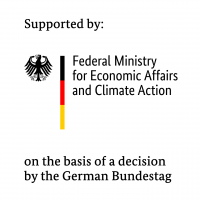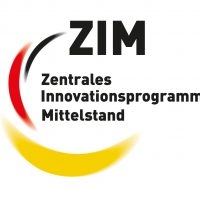Four Software Modules to Optimize Peening


The research and development project “PeeningAssist – Assistance system for technology integration surface hammering” is funded by the Federal Ministry for Economic Affairs and Climate Action (BMWK) as part of the Central Innovation Program for small and medium-sized enterprises (ZIM) under project no. KK5161702PK0.
Details
Peening is a relatively new automated finishing process for metal surfaces and has proven itself to be a worth-while alternative to laborious processes such as manual grinding and polishing because it is more precise and eco-friendlier. However, before workpieces can be peened, they have to be milled and no CAM software yet has coordinated both processes, peening and milling. In addition, different material properties are not factored in the process. Therefore, the project PeeningAssist is meant to fully integrate peening into production by implementing four software modules, each addressing a gap in current peening processes.
During hammer peening, the high frequency impact of a spherical hammering tool is used to polish surfaces, a comparatively new procedure for the surface finishing of metal parts since most parts are still ground or polished. An additional special feature of peening is that workpieces can be polished and work hardened in just one process. To suit different production aims, three hammer peening tools are available: pneumatic actors, electromagnetic actors, and piezoelectric actors. Hammer peening originates from the automotive industry, but it has by now proven its utility throughout industrial production. The advantages of hammer peening are less tool wear, increased precision of the hammer peening tool and higher automatization. Additionally, only a small amount or even no lubricants are needed to remove stamped parts – which makes peening not only efficient, but also eco-friendly. Another advantage is that peening can take place on the same machine workpieces are milled on.
Apart from these advantages, peening as a new finishing process puts challenges on the automatization software as there is no CAM system available that is able to coordinate the processes of milling and peening. Another obstacle to a large market integration is that different metals have different material properties which have to be considered, both in the individual process and their interaction. The aim of the project PeeningAssist is therefore the development of a software tool that complies the machining processes milling and peening with consideration of material properties to increase the efficiency and precision of production.
The development of such a software is far from an easy task: mathematical models of milling and peening have to be established, and their interaction on the machine must be integrated in the model. On top of that, material models need to be derived to optimize the machining of known materials and to identify unknown material compositions and feed them back to the established models. Since production systems can vary, the different production systems and their respective static and dynamic behaviors need to be integrated as well. All these aspects are challenges, yet the main challenge for CAM in this context remains the interplay of milling and peening.
In current CAM systems, peening paths are calculated as if peening was an isolated process. To integrate milling, which takes place beforehand into the process, the milling strategy must be purposefully chosen to seamlessly lead to the subsequent peening process. These chosen milling parameters will be handed over to the CAM module to plan the peening process and to execute the optimized peening process. For the optimization of peening in its efficiency and the precision of surface finishing in the PeeningAssist software, four technological modules are developed.
For the first module, material parameters have to be determined which includes gathering data about the material properties of different metals during milling and peening. From the entirety of material properties of each metal, the relevant properties must be filtered and be fed into a model. In a second step, the model requires a detailed investigation of the milling process, including the milling approach, the diameter of the tool, the working angle, the number of tool parts and the tool speed. This must thirdly be joined with the peening process, connecting the surface quality aimed for to the path plan (see illustration below). Surface qualities can vary as it is possible to aim for different outcomes such as a certain surface roughness, different levels of the roughness peaks and work hardening.

The fourth module is an optional tool which offers an objective comparison between different peening tools (pneumatic, electromagnetic and piezoelectric actor) and the economic costs of the overall finishing process. To calculate the economic costs, this module will consider the material, the geometry, the production time as well as the operating time of the tool over the span of a year. Furthermore, company-specific features such as the machine hour rate and salary can be added. This information is secured by storing the data locally to protect vulnerable in-house information.
All four modules analyze the production process according to the parameters chosen and automatically optimize the process. The resulting software overcomes many obstacles to the implementation of hammer peening: it connects the processes of peening and milling; it considers the material properties of the workpiece and is highly cost-efficient. The four software modules to optimize peening prepare the process for large scale industrial application.